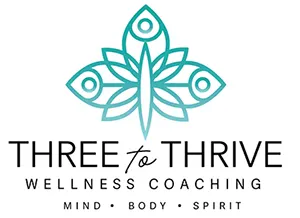Welcome to a place of encouragement and inspiration on your path to well-being. You deserve it!
Just Breathe
Simple but not necessarily easy. It seems like anyone alive would automatically know how to breathe but I’ve observed and also experienced times where lungs, brain and body were just not on the same page.
How are you breathing right now? Pause and notice your breath- is it shallow or deep? How fast or slow is it? Where in your body do you feel it- your nose, chest, or stomach? How does it connect with your emotions?
Several years ago, I experienced extreme fatigue, chest pain, breathlessness, and a loud wheeze with moderate activity. It took a long time to diagnose Lyme disease. Instead, I was told my symptoms were all psychosomatic so I was still attempting to train for a half marathon with increasing frustration around my breathing and energy levels. Grateful now for every breath, I am more observant around how the air in and out of my lungs affects every aspect of my mind and body.
Have you ever noticed when you are stressed or worried that you hold your breath? When you are active or excited, do you take short, choppy, quick breaths? Most of us are constantly activating our stress response when our body learns that every day stressors are worthy of the “flight, fight or freeze” response. Conscious breathing can flip us into the “rest and digest” system where our bodies and brains function most efficiently.
On average, you will take 670 million breaths in your lifetime. In the book, Breath: The New Science of a Lost Art, James Nestor argues that 90 percent of us are breathing incorrectly and this failure is either causing or aggravating a laundry list of chronic diseases (snoring, sleep apnea, asthma, autoimmune disease, allergies, obesity, etc). The good news is that many modern illnesses (asthma, anxiety, ADHD, emphysema and even psoriasis) could be reduced or reversed simply by changing the way we inhale and exhale.
Here are a few of James Nestor’s concrete suggestions for better breathing
1. Use your nose- Breathing in through your nose filters, heats and treats raw air. Did you know that inhaling through the nose (vs the mouth) can trigger different hormones to flood our bodies, lower our blood pressure, regulate our heart rate and even store memories?
2. Exhale completely- Most of us use only a fraction of our total lung capacity. When we take a very deep breath, the diaphragm lowers and that sucks a huge profusion of blood into the thoracic cavity. As we exhale completely, that blood shoots back out through the body giving us the best exchange of oxygen and Co2. Exhaling also relaxes the body as it elicits a parasympathetic response (Rest, digest system). Practice getting all the air out of your body so that you can take more in.
3. Chew- For large sinus cavities, strong jaws, and straight teeth, eat a diet of rougher, rawer, and heartier foods. Even as adults, this will influence the shape of your mouth and improve your ability to breathe.
4. Breathe more on occasion and less on others. There are hundreds of different breathing techniques to develop mind and body health.
Specific breathing techniques can be employed to improve athletic performance, energize our bodies and brains (see Wim Hof method in resources below), or calm our nervous system. To manage anxiety, improve sleep, and improve focus, some of my favorite practices include: Box breathing, 4-7-8 breath, the physiological sigh, belly breathing, breathing in for 3, out for 6 (exhale 2x longer than your inhale). My favorite method in my mindfulness practice is simply to notice my breathing pattern.
Try one of the above techniques for 2 minutes then check in with your body and brain. Do you feel more relaxed, focused, or energized? It is so worth taking those 2 minutes to nourish your body and mind with mindful breathing.
“No matter what we eat, how much we exercise, how resilient our genes are, how skinny or young or wise we are- none of it will matter unless we’re breathing correctly. The missing pillar in health is breath. It all starts there.” – James Nestor in the book, Breath: The New Science of a Lost Art.
If you are new to our newsletter, check out past blogs and additional resources at threetothrivewellness.com. You are welcome to share this newsletter with anyone you think would benefit from reading it.
Resources:
James Nestor on 5 ways to improve your breathing: https://www.youtube.com/watch?
Wim Hof breathing: https://www.wimhofmethod.com/
Mindfulness breathing: https://www.mindful.org/a-
Dr. Andrew Weil: https://www.drweil.com/videos-
In-depth on the Physiological sigh: https://ai.hubermanlab.com/s/

